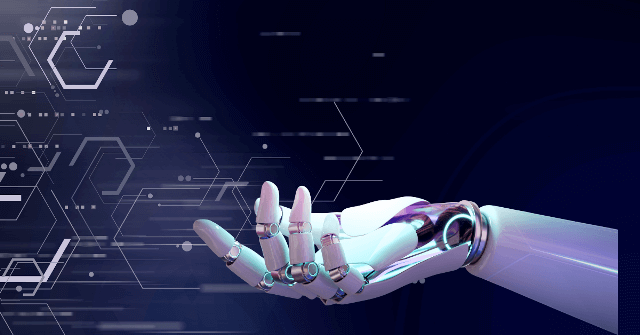Feature extraction in computer vision is the process of identifying important details in an image. These details called features can be edges, corners, textures or specific patterns. Computer images use these details to understand and identify objects. Feature Selection helps reduce the amount of data, keeping the most useful information for functions such as image recognition and object detection.
Have you ever wondered how your phone is unlocked with your face or how google lens identifies objects in a photo? It all starts with image processing. By picking out key details computers can see and process images just like humans. Whether it’s detecting a smile in a selfie or spotting a tumor in a medical scan feature extraction is what makes computer vision so powerful.
With advancements in artificial intelligence, visual data analysis has evolved. Traditional methods relied on mathematical techniques while modern approaches use deep learning. Convolutional Neural Networks automatically learn details of images. This has improved accuracy in various computer vision tasks.
Understanding Feature Extraction
Feature extraction helps computers recognize important details in an image. It makes it easier to analyze and understand visual data. Instead of processing an entire image, the computer focuses on key points that matter the most.
Definition and Concept of Features in Images
Features are specific patterns or details in an image that help identify objects. They can be complicated as a straight line or as a face.. Features provide meaningful information that allows machines to detect size, texture and structures. Without feature selection, computers will struggle to create an understanding of images.
Types of Features: Edges, Corners, Textures, and Shapes
- Side: Boundaries between objects, such as car or building outline.
- Corner: points where two sides are found, such as a table or a window corner.
- Texture: Pattern in an image, roughness of a brick wall or smoothness of a road.
- Figures: Identified forms, such as circles, square or human faces.
By focusing on these features a computer vision system can detect and classify the objects in the system images.
Major techniques for feature extraction in computer vision
Key feature identification is necessary to help the computer understand images. There are two main approaches: traditional methods and deep learning-based techniques. Traditional methods rely on mathematical rules, while deep learning learns features from data automatically.
Traditional Feature Extraction Methods
Edge Detection (Sobel, Canny)
- Edges define object boundaries.
- Sobel detects edges by checking brightness changes.
- Canny finds clear and smooth edges with better accuracy.
Corner Detection (Harris, FAST)
- Corners are points where edges meet.
- Harris detects strong corners by analyzing intensity changes.
- FAST is quicker and works well for real-time applications.
Texture Analysis (Gabor Filters, LBP)
- Textures describe surface patterns in images.
- Gabor Filters highlight specific textures like ripples or waves.
- Local Binary Patterns (LBP) capture small texture details for better recognition.
Deep Learning Based Feature Extraction
Convolutional Neural Networks
- CNNs automatically learn features from images.
- They detect patterns like edges, textures, and complex shapes.
- Facial identification, object detection and medical imaging are used.
Autoencoders for uncontrolled feature learning
- Autoencoders learn features without labeled data.
- They compress images and extract meaningful patterns.
- Useful for anomaly detection and noise reduction.
Transfer Learning for Feature Extraction
- Uses pre-trained models to extract features.
- Saves time and improves accuracy.
- Helps in tasks like classifying medical images with limited data.
Both traditional and deep learning methods play a vital role in computer vision. The right choice depends on the problem and available resources.
Applications of Feature Extraction in Computer Vision
Feature extraction is used in many real -world applications. A general use is object detection where computer images identify objects such as cars, animals, or traffic signals. It plays an important role in facial identification that helps the smartphone unlock with face scan. In medical imaging, Computer vision features help doctors to detect diseases in X-rays and MRIs. By focusing on important patterns machines can spot tumors or fractures with high accuracy.
Another important use is in autonomous vehicles. Self-driving cars use Computer vision features to identify roads obstacles and pedestrians. It also improves industrial inspection, where machines check products for defects in factories. In security systems, it helps identify suspicious activities using surveillance cameras. From smart cameras to advanced AI tools, Computer vision features make computer vision faster and more accurate.
Challenges and Future Trends
Visual data analysis in computer vision comes with challenges. One major issue is handling noisy or blurry images which can confuse the system. Lighting changes and different angles also make feature detection harder. Another challenge is computational cost, as deep learning models need powerful hardware. Extracting the right features quickly and accurately is still a big task.
The future of visual data analysis looks promising. AI driven methods are improving accuracy by learning better features from data. Self supervised learning is reducing the need for large labeled datasets. Real time processing is getting faster with advanced hardware. As technology grows visual data analysis will become more efficient and widely used in various industries.
Conclusion
Feature selection is an important part of computer vision . It helps in understanding images by focusing on important details of machines. Traditional methods use mathematical techniques while deep learning automates the process. From object detection to medical imaging visual data analysis powers many AI applications.
As technology improves, feature extraction will become more accurate and efficient. AI and self-supervised learning will make it even smarter. Challenges like noise and high computation costs will be reduced. In the future feature selection will continue to shape innovations in computer vision.
FAQs
What is facility extraction in computer vision?
Feature extraction is the process of identifying important details in an image to help understand and identify machines.
How does feature extraction improve image recognition?
It reduces unnecessary data and highlights key patterns, making it easier for machines to detect and classify objects accurately.
What are the best feature extraction techniques?
Some popular techniques include edge detection (Sobel, Canny), CNNs for deep learning, and texture analysis methods like LBP and Gabor filters.
What is the difference between traditional and deep learning-based feature extraction?
Traditional methods use fixed mathematical rules, while deep learning automatically learns the best features from data for higher accuracy.



